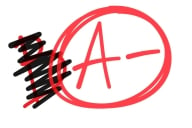You have /5 articles left.
Sign up for a free account or log in.
RawPixel
For decades now, a prevailing narrative in higher ed has been that humanities departments are withering away as incoming college students prioritize what are said to be more “career-related” majors in business and STEM disciplines. The scale of this trend may have been exaggerated, but the narrative has undoubtedly affected the way humanities departments and disciplines are perceived by both students and faculty. However, my own experience teaching post-COVID cohorts of Generation Z students has given me reasons to believe that the population of incoming college students may have unique reasons for being attracted to the kind of inquiry promoted by humanities disciplines.
One of the most conspicuous features of the incoming generation of college students is their commitment to social justice and their investment in the discourse surrounding shifting ideas about race, gender, sexuality and the environment. It turns out that many of the foundational terms and concepts that make up this discourse originated in the fields of literary criticism, cultural studies and critical theory. Terms that Gen Z students use reflexively to make sense of their world—the concepts of “the other,” intersectionality, cisgender, multiculturalism and cultural appropriation—evolved and in many cases originated in the work of humanities scholars.
This is not surprising, considering that the work of the humanities is specifically devoted to analyzing the deep structures and latent meanings of human expression and behavior. In their offhand comments, young people will refer to the works of Foucault, Derrida or Judith Butler without, of course, realizing that they are doing so, demonstrating the unrecognized but undoubtable influence that humanities scholarship has had on the way we think.
More fundamentally, many of my students seem to have internalized an essentially skeptical perspective about their social environments and even about their own ideals and motivations. They share a sense that the social structures they see around them and that they have inherited are somehow lying to them—that social reality is not what it seems to be and therefore requires analysis, interpretation, deconstruction, close reading. Conducting this kind of investigation of human reality is precisely the mission of humanities disciplines, providing these students with an opportunity to develop the intuitions that undergird their famed commitment to social justice.
In addition to perceiving social reality as a text that needs to be interpreted, college-age students also find themselves surrounded by “texts” in the sense that the word is used by many humanities scholars: framed representations of some particular perspective on human reality. While print-based texts may be less common in the life world of these students (although still more influential than some may assume, the boom in young adult novels spawning a literary renaissance among at least some Zoomers), other kinds of texts have proliferated wildly, from complex serialized television dramas to multiplayer online video games to verbally intricate rap lyrics to heavily edited short videos on TikTok and YouTube, and, of course, other social media content. Many of these texts, moreover, foreground their own textuality in a number of ways, inviting their audiences to read them as texts—as fictional, self-conscious performances.
In the post-COVID era, when screens have definitively incorporated themselves into the texture of contemporary reality, many young people are immersed in such texts, sometimes to such an extent that this intertextual world of representations may seem to vie with their lived experience for existential priority. This textual immersion might be the most salient feature of what it means to come of age as a member of Generation Z, but there is very little that the disciplines of business, STEM or even the social sciences can do to illuminate what it means to live in this way. This is a job for literary criticism and film studies, for art history, cultural studies, and philosophy. Young people studying these disciplines discover a range of conceptual tools that they can use to make sense of their own intertextual lives.
It is also widely recognized that Generation Z is the most diverse group of incoming college students, and that this multicultural identity is an important part of their self-perception. That is to say that ethnic, racial, cultural, linguistic, religious and sexual diversity is not only a demographic reality for these students; it is also a conceptual lens for thinking about social problems, personal attitudes and philosophical questions. Whereas previous generations of learners tended to think in terms of a “master narrative”—one rooted in the historical experience of privileged white men—alongside a subset of alternative narratives, the proliferation of different ways of seeing that is visible among Zoomers’ peers dissolves the metanarrative of cultural hegemony into an ecosystem of varying points of view that humanities scholars have long described with terms like “polyvocal,” “decentered” and “rhizomatic.”
Because the diversity of human perspectives has always been one of the most salient aspects of what it means to be human, humanities disciplines specialize in innovating ways of thinking about how different points of view intersect with, conflict with, define themselves against, react against, absorb, parasitize and incorporate one another. Such a perspective has the capacity not only to help students navigate the complexities of their intercultural social worlds but also to help them articulate their own identities amid this multiplicity. In a social reality characterized by the fluidity of identity markers related to culture, gender and sexuality, as well as by the digital mediation of these markers, selfhood itself becomes the kind of fraught terrain that humanities scholars devote their skills to unpacking.
Despite all the innovations and new perspectives that humanities scholars have brought to their work over the past decades, the humanities disciplines are rooted in a deep historical tradition that goes back to the Enlightenment, the Renaissance, the Islamic Golden Age and Periclean Athens. This historical baggage is partly responsible for the “fuddy-duddy” reputation sometimes associated with the humanities; it can sometimes seem like humanities scholars are haunted by the legacy of obsolete languages, obscure texts and, most problematically, dead white men. At the same time, this very critique of the humanities as hobbled by its own history is the product of generations of humanities scholarship that has sought to confront, critique and transform this tradition. The very denunciation of the dead white men crowding the syllabi of 20th-century humanities courses has itself been one of the significant innovations made possible by humanities scholarship as part of a wider critique of the stranglehold that Eurocentric and white supremacist perspectives have exerted on contemporary social structures. This critique is grounded in the values of humanism and humanity that underlie the humanities as a way of seeing and thinking.
The humanities constitute a search for authenticity and perspective—for, in short, the human—in a world of screens, chat bots and neoliberal systems of surveillance and control. They have a vital perspective to offer for emerging scholars seeking to make sense of a changing world, and there is doubtless a lot more that humanities departments can do to advertise this fact to their students. In a world where the half-life of technical knowledge is growing ever shorter, the humanities provide a robust and enduring framework that can empower students to think critically, communicate meaningfully and take an active role in shaping their futures.



ebb0.jpg)